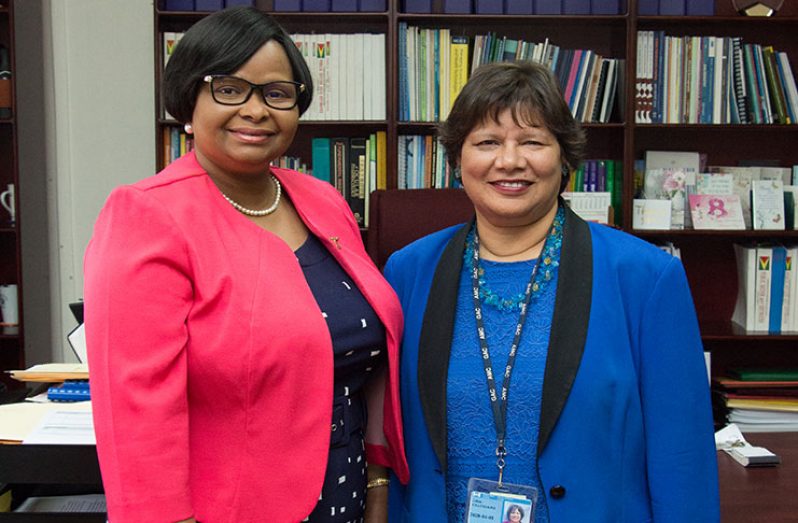THE Ministry of Public Health will roll out a telemedicine programme in five regions next year, Public Health Minister, Volda Lawrence said.
She made the disclosure during a courtesy call to her office by new Canadian High Commissioner to Guyana, Lilian Chatterjee.
According to a press statement, the Finance and Telecommunications Ministries are firmly behind the distance medicine novelty which will target Regions One (Barima/Waini); Six (East Berbice/Corentyne); Seven (Cuyuni/Mazaruni); Eight (Potaro/Siparuni) and Nine (Upper Takutu/Upper Essequibo).
Telemedicine, also called ‘e-health’ or ‘telehealth’, allows healthcare professionals to evaluate, diagnose and treat patients in remote areas using telecommunications technology, removing the need for face-to-face meetings with doctors or nurses.
When this programme is launched it will cut dependency on the current medevac services for interior residents, Lawrence told Chatterjee, who promised to “look into this more to see if there are opportunities.”
The high commissioner said she is excited to team up with Minister Lawrence because she has a keen interest in public health.
“I am at the disposal of my government and yours,” Chatterjee said, assuring that her tenure here will continue the good relations with the government of Guyana.
Chatterjee reportedly has a vast array of expertise in the area of development, honed from her attachment as a specialist at the Canadian International Development Agency (CIDA).
There, she helped design and implement some of the initiatives enjoyed by Guyana and other developing nations.
Minister Lawrence conveyed Guyana’s gratitude to Canada as one of the nations which has helped in achieving its objectives and predicts that Chatterjee’s incumbency will produce more “positive results” between the two friendly nations.
The public health minister told the Canadian diplomat that Maternal and Child Health (MCH) weighs heavily on her agenda and she wants a follow-up meeting to brief her on ongoing initiatives in the sub-sector.
The minister also used the opportunity to give Chatterjee a panoramic sweep of ongoing MCH initiatives in Regions One (Barima /Waini); Seven (Cuyuni/Mazaruni); Eight (Potaro/Siparuni) and Nine (Upper Takutu/Upper Essequibo) targeting the country’s indigenous populations who are currently being trained as Community Health Workers (CHWs) to ensure that there are well-trained personnel in all villages to help monitor and evaluate pregnant women.
The programme, according to Dr. Ertenisa Hamilton, MCH officer, is envisaged to reduce maternal, neo-natal, infant and child deaths here.
Guyana’s maternal mortality ration currently stands at 121/100,000 while the infant mortality ratio stands at 23/1,000 Dr. Hamilton said, referring to a recent MOPH Annual Report by Chief Medical Officer (CMO), Dr. Shamdeo Persaud.
Pregnancy-induced hypertension (high blood pressure) and post-partum haemorrhage are chief killers of Guyanese pregnant women, while respiratory infections and pre-mature births kill the local new-born cited in the local statistics, Hamilton said.
She said delays in seeking help, sloth in arriving for help and further holdups in receiving appropriate emergency care conspire to cause the deaths of Guyanese pregnant women.
The current MCH initiatives which have been backed by Canadian, UNFPA, PAHO/WHO support have seen the reduction of maternal deaths in Guyana, Hamilton said.




.png)









